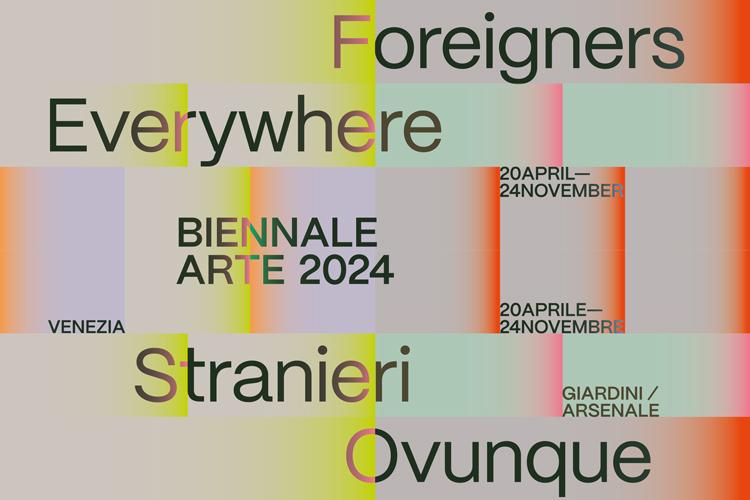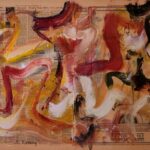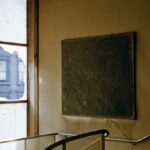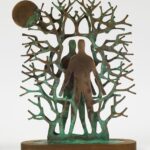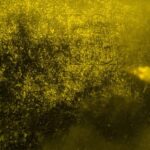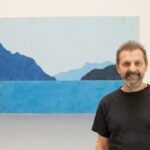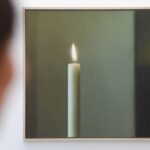Biennale Arte 2024
The 60th International Art Exhibition entitled Stranieri Ovunque – Foreigners Everywhere , curated by Adriano Pedrosa and produced by the Venice Biennale , will be open to the public from Saturday 20 April to Sunday 24 November 2024 , at the Giardini and the Arsenale. The pre-opening will take place on 17, 18 and 19 April , the awards and inauguration ceremony will take place on 20 April 2024 .
Since 2021, La Biennale has started a process of revisiting all its activities according to consolidated and recognized principles of environmental sustainability . Also for 2024 the objective is to obtain the "carbon neutrality" certification , achieved in 2023 for all the activities planned by the Biennale: the 80th International Film Festival, the Theatre, Music and Dance Festivals and, in particular, the 18th International Architecture Exhibition, which was the first major exhibition of this discipline to experiment in the field with a tangible path to achieving carbon neutrality, itself reflecting on the themes of decolonization and decarbonization.
The Curator's international exhibition
The exhibition will be divided between the Central Pavilion in the Giardini and the Arsenale in two distinct nuclei: Contemporary Nucleus and Historical Nucleus .
As a guiding principle, the 2024 Art Biennale has favored artists who have never participated in the International Exhibition , even if some of them have already exhibited in a National Pavilion, in a Collateral Event or in a past edition of the International Exhibition. Particular attention will be paid to outdoor projects, both at the Arsenale and in the Giardini , and to a program of performances during the pre-opening days and on the last weekend of the 60th Exhibition .
The title Stranieri Ovunque – Foreigners Everywhere is taken from a series of works created since 2004 by the collective Claire Fontaine , born in Paris and based in Palermo. These works consist of neon sculptures of various colors bearing the words “Foreigners Everywhere” in different languages. The expression was in turn taken from the name of a Turin collective of the same name which fought against racism and xenophobia in Italy in the early 2000s.
«The expression Foreigners Everywhere – explains Adriano Pedrosa – has more than one meaning. First of all, it means that wherever you go and wherever you are you will always encounter foreigners: they are/we are everywhere. Secondly, that regardless of one's location, deep down one is always truly a foreigner."
Contemporary Core
«The Italian term “straniero”, the Portuguese “estrangeiro”, the French “étranger” and the Spanish “extranjero” are all connected on an etymological level respectively to the words “strano”, “estranho”, “étrange” and “extraño”, or to the stranger. Sigmund Freud's Das Unheimliche comes to mind, The Uncanny in the Italian edition, which in Portuguese was translated as “o estranho”, the strange which, deep down, is also familiar. According to the American Heritage and the Oxford English Dictionary , the first meaning of the word “queer” is “strange”, therefore the Exhibition will develop and focus on the production of further related subjects: the queer artist , who moves within different sexualities and genders and is often persecuted or ostracized; the outsider artist , who finds himself on the margins of the art world, just like the self-taught or the so-called folk or popular artist; the indigenous artist , often treated as a stranger in his own land. The production of these four subjects will be the fulcrum of this edition and will constitute the Contemporary Nucleus."
« Indigenous artists will have an emblematic presence and their works will welcome the public in the Central Pavilion, with a monumental mural created by the Brazilian collective Mahku on the facade of the building, and in the Corderie, where the Maataho collective from Aotearoa/New Zealand will present a large installation in the first room. Queer artists will be present in every space and will form the focus of a large section in the Corderie, as well as an area dedicated to queer abstraction in the Central Pavilion."
«The Contemporary Nucleus will host in the Corderie a special section dedicated to Disobedience Archive , a project by Marco Scotini who since 2005 has been developing a video archive focused on the relationships between artistic practices and activism. The presentation of Disobedience Archive in the Exhibition is designed by Juliana Ziebell, who also worked on the exhibition architecture of the entire International Exposition . This section, divided into two main parts specifically conceived for the Exhibition, entitled Diaspora Activism and Gender Disobedience. Disobedience Archive will include works by 39 artists and collectives created between 1975 and 2023."
Historical Core
«The Historical Core is made up of 20th century works from Latin America, Africa, Asia and the Arab world. Much has been written about global modernisms and those of the South of the world , which is why in some rooms works from these territories will be exhibited, as if to constitute a sort of essay, a draft, a hypothetical curatorial experiment aimed at questioning the boundaries and definitions of Modernism. We know all too well the history of Modernism in Euroamerica, but the modernisms of the Global South remain largely unknown. […]. European Modernism itself traveled well beyond Europe during the twentieth century, often intertwined with colonialism, just as many artists from the Global South traveled to Europe to exhibit their work. […]".
The Historical Core includes three rooms in the Central Pavilion : the room entitled Portraits , the room dedicated to Abstractions and a third room dedicated to the Italian artistic diaspora in the world throughout the 20th century .
«The two rooms hosting the Portraits will include the works of 112 artists , mostly paintings, but also works on paper and sculptures, covering a period of time between 1905 and 1990 . […] The theme relating to the human figure will be explored in countless different ways by artists from the global South, reflecting on the crisis of the representation of the human that has characterized much of 20th century art. In the South of the world, numerous artists have come into contact with European Modernism through travel, studies or books, while bringing very personal and powerful reflections and contributions to their works […]. The room dedicated to Abstractions will include 37 artists : almost all of them will be exhibited together for the first time in unexpected juxtapositions, thus hoping for new connections, associations and parallels that go well beyond the rather simple categories that I have proposed. […]".
Among others, this section includes artists from Korea and Singapore, who in the past were part of the so-called Third World, or indigenous Maori artists of historical relevance such as Selwyn Wilson and Sandy Adsett, from Aotearoa/New Zealand. «[…]
A third room of the Historical Unit will be dedicated to the diaspora of Italian artists who have traveled and moved abroad, integrating into local cultures and building their careers in Africa, Asia, Latin America as well as in the rest of Europe and the United States; artists who often played a significant role in the development of Modernism narratives outside of Italy. The works of 40 first or second generation Italian authors will be exhibited in this room, placed in glass and concrete easel displays by Lina Bo Bardi (an Italian who moved to Brazil, winner of the special Golden Lion in memory of the 2021 Architecture Biennale) ».
«During the research – underlines Pedrosa – two different but related elements emerged in a rather organic way which were developed to the point of establishing themselves as the leitmotif of the entire exhibition. The first is textiles , explored by many artists involved, starting from key figures in the Historical Nucleus , up to many authors present in the Contemporary Nucleus . […] Such works reveal an interest in craftsmanship, tradition and the handmade, as well as in techniques that, in the broader field of fine arts, have sometimes been considered other or foreign, alien or strange . […] A second element is represented by the artists – many of them indigenous – linked by blood ties . […] Also in this case tradition plays an important role: the transmission of knowledge and practices from father or mother to son or daughter or between brothers and relatives."
Villages
The Exhibition will be accompanied by 88 National Participations in the historic Pavilions at the Giardini, at the Arsenale and in the historic center of Venice. There are 4 countries present at the Biennale Arte for the first time: the Republic of Benin, Ethiopia, the Democratic Republic of Timor Leste and the United Republic of Tanzania . Nicaragua, the Republic of Panama and Senegal are participating for the first time with their own pavilion.
The Italian Pavilion at the Tese delle Vergini in the Arsenale, supported and promoted by the Directorate General for Contemporary Creativity of the Ministry of Culture, is curated by Luca Cerizza , with the project Due qui / To hear by the artist Massimo Bartolini , which includes contributions specifically conceived by musicians and writers.
The Pavilion of the Holy See , promoted by the Prefect of the Dicastery for Culture and Education of the Holy See, Cardinal José Tolentino de Mendonça , will take place this year in the women's prison in Venice on the Giudecca . The exhibition is entitled With my eyes and is curated by Chiara Parisi and Bruno Racine .
The Municipality of Venice participates with its own Pavilion, the Venice Pavilion , in the Gardens of Sant'Elena.
Collateral events
The 30 Collateral Events approved by the Curator and promoted by public and private non-profit organizations and institutions, are organized in numerous locations in the city of Venice and offer a wide range of contributions and participations that enrich the pluralism of voices that characterizes the Exhibition .
Special Projects created by the Venice Biennale
Austrian powder magazine, Forte Marghera, Mestre
Ten works by the Italian artist Nedda Guidi (Gubbio, 1927 – Rome, 2015), present in competition in the International Exhibition, will be exhibited in Forte Marghera inside the building called Polveriera Austriaca. «Invited for the innovative techniques used in ceramic sculpture – explained Adriano Pedrosa – Guidi combines the figure of the expert craftsman with the genius of art, not a 'simple' ceramist but a sculptor fundamental to the evolution of contemporary ceramics».
Pavilion of Applied Arts, Arsenale, Sale d'Armi
Brazilian artist Beatriz Milhazes (b. 1960), known for her work that overlaps Brazilian cultural imagery and references to Western modernist painting, will present seven paintings and as many large-scale collages. The Pavilion project, this year curated by Adriano Pedrosa, has reached its eighth edition and is the result of the collaboration between La Biennale and the Victoria and Albert Museum (V&A) in London .
Biennale College Art
Agnes Questionmark, Joyce Joumaa, Sandra Poulson, Nazira Karimi are the authors of the finalist projects of the 2nd edition of Biennale College Arte 2023/24 , which will access a contribution of 25,000 euros for the creation of the final work. Their works will be presented, out of competition, as part of the 60th Exhibition . Over 150 young emerging artists under 30 from 37 countries around the world signed up to the call for participation.
Golden Lions for Lifetime Achievement
The Golden Lions for Lifetime Achievement of the 2024 Art Biennale were awarded to Anna Maria Maiolino , a Brazilian artist (Italian by birth), and to Nil Yalter , a Turkish artist (resident in Paris). The award will be presented on Saturday 20 April 2024 during the awards and inauguration ceremony of the 2024 Art Biennale at Ca' Giustinian, home of the Venice Biennale.
Biennale Sessions, the project for universities
For the thirteenth consecutive year, La Biennale dedicates the Biennale Sessions project to universities, academies and all institutions operating in research and training in the fields of arts, architecture and related fields. The objective is to offer facilitation for three-day visits organized by them for groups of at least 50 students and teachers, with the possibility of organizing seminars in exhibition locations offered free of charge and assistance with organizing travel and accommodation.
Educational
Over the last decade, the Venice Biennale has given growing importance to educational activities, developing a strong commitment to the so-called "Educational" activities towards the public of the exhibitions, universities, young people and school children of all levels and degree. With the last two major exhibitions – the 2022 Art Biennale and the 2023 Architecture Biennale – there were a total of 130,298 subjects involved, of which 71,525 young people participated in the Educational activities. A vast offer is also planned for 2024, aimed at individuals and groups of students, children, adults, families, professionals, companies and universities. All initiatives focus on the active involvement of participants, are conducted by operators selected and trained by the Biennale and are divided into Guided Tours and Laboratory Activities.
The editorial offer and the graphic project
The official catalogue, entitled Stranieri Ovunque – Foreigners Everywhere , is made up of two volumes. Volume I is dedicated to the International Exhibition curated by Adriano Pedrosa. In the first pages, the two brief introductions by President Pietrangelo Buttafuoco and President Roberto Cicutto are followed by an interview with Adriano Pedrosa by Julieta Gonzàles. The first part of the volume is dedicated to critical essays and some "Conversations", including the interviews with the Golden Lions for Lifetime Achievement, Anna Maria Maiolino and Nil Yalter, the second part is dedicated to the presentation of the exhibited artists divided into two main sections : Historical Core and Contemporary Core. Each artist is introduced by an in-depth critical text and his work is illustrated by an iconographic apparatus. Volume II is dedicated to National Participations and Collateral Events. The Exhibition Guide is designed to accompany the visitor along the exhibition itinerary.
The graphic identity and design of the Biennale Arte 2024 publications is signed by Estudio Campo (Paula Tinoco, Roderico Souza, Carolina Aboarrage) from Sao Paulo, Brazil.
The three volumes are published by La Biennale di Venezia .
The partner and sponsors
The 60th Exhibition is also organized with the support of Swatch , Partner of the event.
The main sponsor of the event is illycaffè .
Sponsors : American Express, Bloomberg Philanthropies, Vela-Venezia Unica
Thanks to Cleary Gottlieb Steen & Hamilton LLP .
Rai is Media Partner of the 60th International Art Exhibition and will follow the event with a dedicated offer on TV, on the radio and on the web.
Thanks
We thank the Ministry of Culture, the local institutions that in various ways support the Biennale, the City of Venice, the Veneto Region and the Superintendency of Archaeology, Fine Arts and Landscape for the Municipality of Venice and the Lagoon, and the Navy.
Thanks go to the Donors and the international bodies and institutions for their support in the realization of the 60th Exhibition.
In particular, our thanks go to Adriano Pedrosa and his entire team.
Finally, thanks to all the great professionals of the Biennale applied with great dedication to the creation and management of the Exhibition.
References: this article is based on content originally published on La Biennale di Venezia. You can read the full article here.
